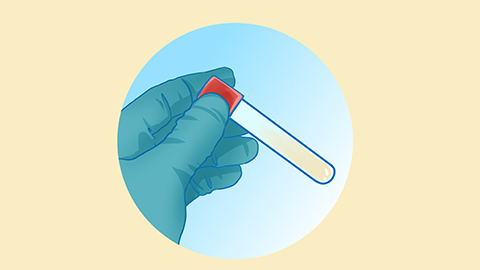What causes excessive vaginal discharge with a fishy odor?
Generally, the main causes of increased vaginal discharge with a fishy odor include hormonal changes before and after menstruation, poor hygiene habits, bacterial vaginosis, trichomoniasis, cervicitis, etc. If discomfort symptoms occur, it is recommended to seek timely medical attention at a正规 hospital for diagnosis and treatment. Specific analysis is as follows:
1. Hormonal Changes Before and After Menstruation
Hormonal fluctuations, especially in estrogen levels before and after menstruation, can increase cervical and vaginal secretions. If not cleaned promptly, accumulated secretions may produce a mild fishy odor. It is advised to frequently change sanitary products, wash the external genital area with warm water, keep the area dry, wear cotton breathable underwear, and avoid tight clothing.

2. Poor Hygiene Habits
Long-term failure to change underwear or infrequent replacement of sanitary products during menstruation can lead to bacterial growth, which breaks down secretions and produces a fishy odor, often accompanied by increased vaginal discharge. Change underwear daily; after washing, dry underwear in direct sunlight for disinfection. During menstruation, replace sanitary products every 2–3 hours and avoid tub baths.
3. Bacterial Vaginosis
An imbalance in the vaginal flora—particularly an overgrowth of anaerobic bacteria such as *Gardnerella*—leads to the production of amine compounds from the breakdown of vaginal secretions, resulting in increased, foul-smelling discharge that is typically thin and gray-white in appearance. Treatment under medical guidance may include metronidazole vaginal suppositories, clindamycin phosphate vaginal gel, or oral tinidazole tablets. Avoid sexual intercourse during treatment; partner treatment is generally not required.
4. Trichomoniasis (Trichomonas Vaginitis)
Infection with *Trichomonas vaginalis* disrupts the vaginal microenvironment, causing increased yellow-green frothy discharge with a strong fishy odor, often accompanied by itching of the external genitalia. Under medical supervision, treatment may include oral metronidazole or tinidazole, or metronidazole vaginal effervescent tablets. Sexual partners should also receive simultaneous treatment to prevent cross-infection.
5. Cervicitis
Cervicitis caused by pathogen infection or mechanical injury leads to congestion of the cervical mucosa and increased secretions. Discharge becomes purulent and emits a fishy odor, often accompanied by pain in the lower back or sacral region. Under medical guidance, medications such as cefixime capsules, doxycycline hydrochloride tablets, or azithromycin dispersible tablets may be used. If cervical polyps are present, surgical removal (polypectomy) may be necessary. Sexual activity should be avoided for one month after surgery.
In daily life, maintain good external genital hygiene and avoid overusing cleansing products; choose cotton, breathable underwear to reduce bacterial growth; practice safe sex to lower infection risk; and undergo regular gynecological check-ups to detect and address issues early.




